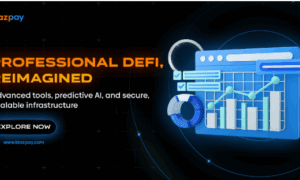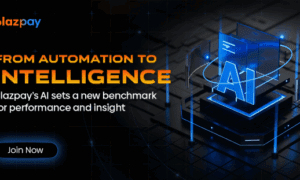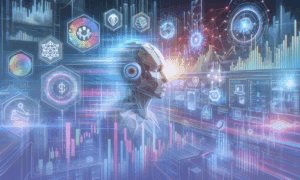In the rapidly evolving world of customer experience (CX), artificial intelligence—particularly Generative AI—is not just a support tool; it’s becoming the engine driving transformation. The traditional role of customer service agents is shifting from routine task-handlers to strategic, insight-driven collaborators, thanks to AI-powered systems that streamline complexity and enhance personalization at scale.
This article explores how AI is redefining agent roles, enhancing skills, and transforming CX delivery models globally.
The New CX Paradigm: Augmenting Human Agents with Generative AI
Generative AI enables dynamic, personalized responses based on deep learning models trained on vast datasets. It improves the speed, accuracy, and relevance of customer interactions. Rather than eliminating the need for agents, it reshapes their roles to focus on tasks where empathy, reasoning, and creativity are indispensable.
Organizations now integrate AI into omnichannel environments—email, chat, voice, social—to automate common queries and surface real-time insights that empower agents to act faster and smarter.
According to a recent Harvard Business Review article, businesses using generative AI in their CX strategies report improvements in first-contact resolution, reduced handling times, and higher customer satisfaction—all while reducing cost-to-serve.
Exploring CX with Gen AI: Moving Beyond Chatbots
Many businesses are now improving their customer experience through CX with Gen AI, which moves far beyond basic automation. This approach uses advanced generative AI to deliver personalized, efficient, and human-like support. If you’re looking to implement this strategy, check out this helpful whitepaper by Inspiro that explains how to revolutionize your customer experience beyond traditional chatbots.
Evolving Roles: The Rise of the AI-Augmented Agent
As machines handle the repetitive and data-intensive side of customer interactions, agents step into more strategic roles. Here’s how agent responsibilities are shifting:
1. Data-Driven Problem Solvers
Agents are expected to interpret real-time data dashboards, understand customer histories, and act on AI-suggested actions. They’re no longer just reacting—they’re proactively anticipating customer needs.
2. Emotionally Intelligent Communicators
AI handles logic; agents handle emotion. With emotional intelligence now at the forefront of CX, agents must be skilled in empathy, tone control, and contextual listening to build meaningful human connections.
3. CX Designers-in-the-Loop
Agents are being trained not just to execute, but to collaborate in the design and refinement of AI workflows. By sharing insights on customer pain points and friction areas, they help optimize how AI systems interact.
Skills That Set the Future Agent Apart
To succeed in an AI-enhanced environment, agents need a hybrid skill set combining technical literacy and human-centric abilities:
- AI Tool Fluency: Knowing how to use AI dashboards, prompt interfaces, and smart routing tools.
- Analytical Thinking: Understanding behavioral patterns and using data-driven insights to personalize interactions.
- Adaptability: Embracing continuous learning as AI systems evolve.
- Customer-Centric Mindset: Maintaining focus on customer satisfaction while using technology as a partner.
These new demands are encouraging organizations to redesign training programs and career paths, emphasizing continuous upskilling and digital transformation readiness.
The Metrics Are Changing, Too
Legacy KPIs like Average Handle Time (AHT) and Call Volume are now complemented by AI-generated performance insights, including:
- Resolution Confidence Scores
- Customer Sentiment Trajectory
- Agent-AI Collaboration Efficiency
This data isn’t just retrospective—it’s predictive. Leaders can now identify where training is needed, which workflows to optimize, and how to scale personalization without sacrificing operational efficiency.
Governance in the Age of AI: Doing It Right
Adopting AI in customer service introduces not just opportunities, but responsibilities. Ensuring ethical, secure, and transparent use of AI is crucial. Companies are now building frameworks that include:
- Human-in-the-loop supervision
- Audit trails of AI decisions
- Bias detection and correction mechanisms
- Customer transparency on AI involvement
This builds trust—a core ingredient of successful CX.
And as Forrester analysts suggest, the businesses that blend human judgment with AI precision are the ones likely to achieve sustainable competitive advantage.
Blueprints for AI-Driven CX Transformation
Companies successfully leveraging AI in CX are doing so with structured transformation strategies. Here are three proven approaches:
1. Augmented Frontline Support
Use AI to provide agents with real-time suggestions, next-best actions, and intelligent workflows. This reduces resolution time while increasing customer satisfaction.
2. Predictive Engagement
Instead of waiting for issues to surface, AI helps brands proactively reach out based on intent signals and sentiment analysis.
3. Continuous Feedback Loops
AI listens to interactions and creates training recommendations, helping agents refine soft skills and product knowledge in real time.
These models are not only scalable but highly adaptable across sectors—finance, telecom, e-commerce, and healthcare alike.
Empowering Agents to Become Strategic Assets
AI adoption doesn’t devalue human roles; it amplifies their impact. By relieving agents of monotonous tasks, companies free up human capacity for complex decision-making, creativity, and empathy—skills machines can’t replicate.
As agents evolve into CX architects, AI trainers, and customer strategists, their value to the organization increases. This shift also boosts job satisfaction, reduces churn, and attracts future-focused talent who seek growth and purpose.
Looking Ahead: The Future of AI in CX
The next generation of AI will be multimodal, combining voice, visual, and textual data to provide holistic customer engagement. Agents will manage immersive CX journeys across AR/VR platforms, biometric interfaces, and predictive ecosystems.
Businesses that invest in agent experience alongside customer experience will lead this transformation—delivering faster service, smarter solutions, and more human interactions at scale.
Conclusion: Human and AI—Better Together
AI is not here to replace the workforce—it’s here to enhance human potential. In customer experience, this means giving agents the tools, insights, and freedom to do what they do best: connect, empathize, solve, and delight.



































